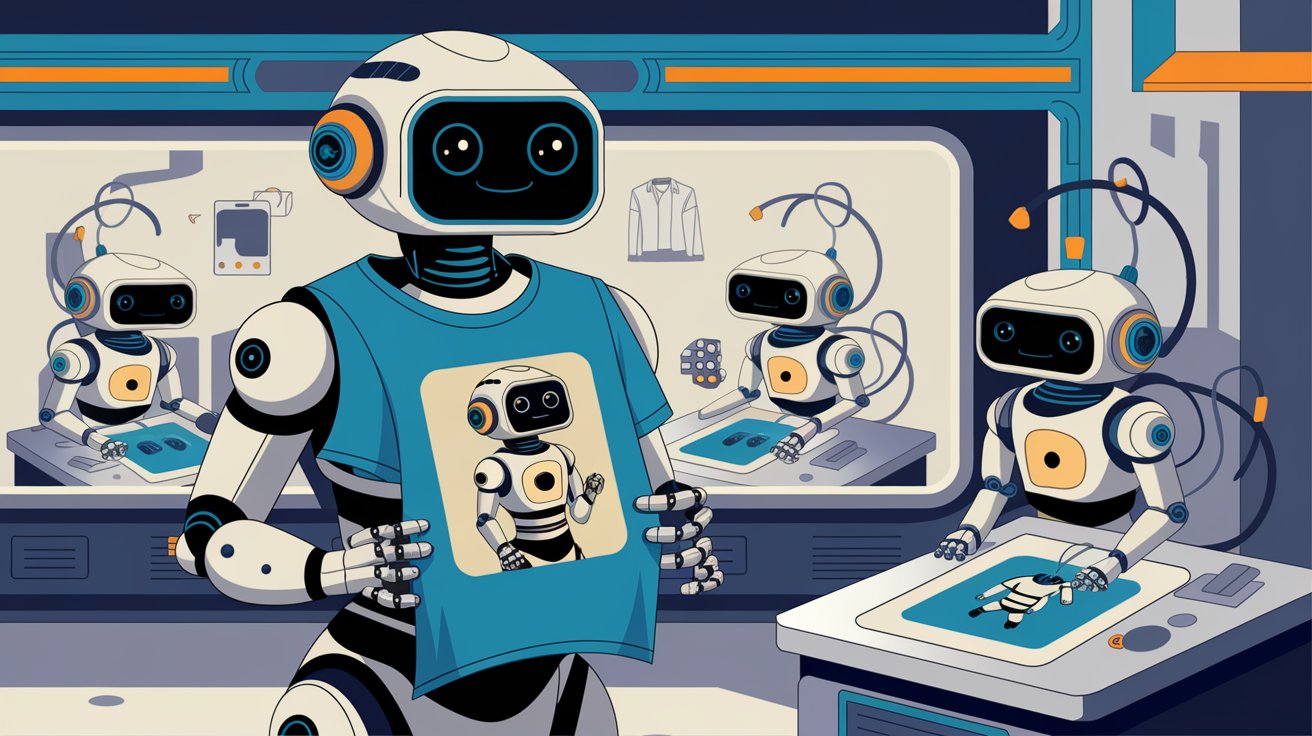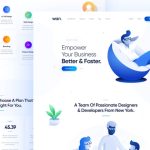T-shirt design is a very inventive and turbulent industry that has been developing from the moment when designers attempted to tell a story with the help of their clothes. However, foreshadowing the future brings us with one key technological shift: Artificial Intelligence. AI is making its way through every business field, and the design industry is not an exception. But what does this really mean to the Future of T-Shirt Design Jobs? AI may become a powerful tool in helping creative workers or does it just take over their jobs?
In this particular blog post, we are going to unravel What’s next for t-shirt design jobs?, the Pros and Cons of having such a technology, and What skills t-shirt designers need for AI sovereignty.
The Effects of AI on T-shirt Design
AI technologies in extending paradigms including, machine learning and generative design have emerged to enhance and automate the design task. Right from a simple image like logos to complex patterns, even newcomers and expert designers get to carry out new designs and artworks in much less time than before.
For instance, such AI programs as SCAN look into the trends, customer preferences, and overall popular visual themes so as to bring forth proposed design themes that would be most likely to appeal to specific audiences. It will be that information that designers will use to improve their work by being able to develop even better and sellable designs. It is a process that places reliance on data and gradually gains popularity and it is thus not shocking to see more and more being a favorite tool for t-shirt design brand that wants to be ahead of its competitors.
Will We Replace Humans Responsible for Designing and Developing Products with Artificial Intelligence?
Nevertheless, AI has been revolutionizing the design of t-shirts as we know it and it does not stand a chance to fully replace human designers any time soon. The type of work that AI gets to handle is repetitive and time-consuming, for instance, color correction, resizing, and such tasks where creative designers can be assigned to creatively challenging endeavors.
But one thing that it is not going to overpower is people’s imagination. Even if AI comes up with thousands of designs, it will not be able to capture that personal aspect, that ability to tell a story, and eddy in depth of feeling a human can give. Within the world of fashion, customers actually engage with designs representing personality, experiences, and culture, all of which AI perhaps can never encapsulate.
That’s where AI will likely act as this tool – the tool that literally amplifies the creativity of a designer by offloading the tedious while offering them fresh means to engage with design parts. This partnership of human designers and AI to work more effectively and create new designs of their best quality that would appeal to all sorts of tastes.
AI and Opportunities for the Designer of the Future
Designers shall dedicate more free time to thinking 3rd order and above, concepts, and planning due to the shift in automation worked by AI. The market for such skilled designers who can aptly incorporate their artistry into advanced AI technologies will rise. Following are a few career profiles that may gain prominence in the near future:
AI-Assisted Designer: Whereas in the past specific tasks in the designing process were managed by different tools, now designers will work with AI tools in general concept creation and design development as well as pattern optimization.

Design Curator: If AI creates lots of content then human designers will have the task of filtering and selecting the best content for brand identity and client requirements.
AI Design Strategist: They will be able to support the process of utilization of AI to a design cycle while focusing on the fact that the instruments developed will enhance business goals and assist within the context of marketplace competition.
Ethical Design Specialist: The scale of involvement of AI in design will make such questions raised increasingly: ethical, diversity, and culture-related. To ensure that AI-created designs reflect as many points of view as possible, we will see a growing demand for designers with a focus on these fields.
Thus, it can be assumed that AI keeps on proactively influencing the T-shirt design sector, and therefore, it is important for a designer to develop a competitive edge by daily studying IT advancements. The key skills a future T-shirt designer will need to possess include:
AI Tool Proficiency: It is about a designer embracing the most practical AI-driven design software to expand their creative processes.
Critical Thinking and Problem Solving: With AI designs, there is still the core requirement of a designer to think about and work on the designs in order to satisfy the user needs of the target group.
Strong Artistic Vision: Despite all the assistance from artificial intelligence, one would always require the creative unique point of view of the designer while developing a significant and purposeful design.
Adaptability: With the evolution of AI technology added flexibility towards the newest tools and techniques will also turn into an organic necessity of the market.
Storytelling and Brand Understanding: The design for t-shirts needs to make sense to those who will be wearing them. The great depth of the brand and the audience it appeals to must be taken into consideration during the design process. The designer should still be an active participant in the narrative of their designs.
Embracing the Future of T-Shirt Design
The future of T-shirt design in an AI-driven world is full of exciting possibilities. Far from replacing human creativity, AI has the potential to empower designers with new tools, insights, and efficiencies capable of taking their work to new heights. What matters most, though, is embracing this technology while holding close to the artistic vision that makes T-shirt design such a dynamic, personal means of expression.

Understanding how to control human factors with AI-powered systems will take designers a long way toward market evolution. As the future t-shirt design market continues to grow and is aware of technology, it will be for them that leverage the value of AI by always considering that what they are working on is art.
Frequently Asked Questions
Should we expect, someday, AI really replace designers?
AI is disrupting the design industry at the moment, but it isn’t going to replace designers completely. It would be useful in routine functions such as resizing or manipulating colour but human art, imagination, and invention would still be a core imperative in designing a tee. :
What can designers do for an AI-enhanced future?
If designers begin mastering the new AI design tools, enhancing their problem-solver capabilities and developing critical thinking, as well as further polishing their creative visions, they will remain relevant. In the short and the long run, successful communication in the sector will need flexibility and the fusion of the creative together with the sophisticated gadget.
Possible new roles in t-shirt design are artificial design partners/ consultants, design supervisors/curators, AI design strategists, and ethical design officers. In such professions, this one would revolve around creativity from the AI; adherence to brand requirements; and compliance with ethical policies.
Are those t-shirt designs created by t-shirt generators as innovative as those done by real people?
Such results may be derived from data by AI but the penetration of feeling and carving one’s personalized stamp is incomparable to that of a human. Designers will still be at the center of keeping relevance in designs for audiences or narrating through culture or personal mechanisms.
Where exactly does data find application in the design of t-shirts using artificial intelligence?
AI can analyze consumer preferences and trends to deliver insightful information that will assist designers in creating designs targeted toward specific classes of target audiences. A data-driven approach brings about relevance and more marketability in design.










